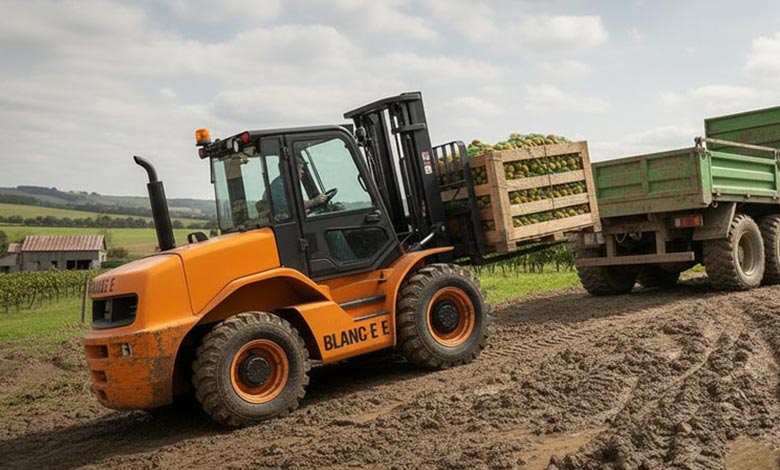Muddy sites often stop standard forklifts in their tracks, causing delays and reducing efficiency for farms and construction projects.
Standard forklifts with low ground clearance, weak 2WD traction, and smooth tires easily get stuck in muddy conditions. The solution is 4WD rough terrain forklifts, built with higher clearance and deep-tread tires for stable, efficient operation.
Let’s explore why standard forklifts sink in mud, and how 4WD rough terrain forklifts overcome the challenge.
Why Do Standard Forklifts Get Stuck in Mud?
Many farms and worksites are not paved concrete but soft soil or muddy after rain, where standard forklifts often fail.
Standard forklifts are designed for flat surfaces. Their low chassis and solid tires slip easily, and once the undercarriage touches the ground, they get stuck.
Low ground clearance means forklifts bottom out in mud, while solid or smooth industrial tires fail to generate traction. Frequent bogging not only wastes time but also wears down the chassis and drivetrain, increasing maintenance costs.
What Does Getting Stuck Mean for Farms and Sites?
Getting stuck is not just a pause—it creates a chain reaction.
Downtime wastes labor, delays schedules, and can even cause farms to miss key harvest windows.
On farms, silage, hay bales, or fruit bins must be moved in time; stuck forklifts may leave crops spoiled. On construction sites, stalled material handling delays entire projects and adds extra labor and equipment costs.
How Do 4WD Rough Terrain Forklifts Solve the Problem?
4WD rough terrain forklifts are engineered for challenging terrain.
Higher ground clearance prevents bottoming, deep-tread tires provide grip, and 4WD distributes torque to keep moving.
Like off-road vehicles, 4WD ensures all wheels maintain traction—even if one side spins, the others move forward. Deep-tread tires quickly clear mud to prevent wheel spin. Together, these features ensure continuous operation in tough conditions.

Efficiency Comparison: Standard vs Rough Terrain Forklifts
Choosing equipment is not just about price—it’s about efficiency and safety.
Standard forklifts operate effectively less than 60% of the time in mud, while rough terrain forklifts improve efficiency by 30–50%.
Recovering stuck forklifts requires manual pushing or towing, wasting time and creating risks. Rough terrain forklifts keep working continuously, reducing downtime, shortening schedules, and directly increasing profitability and customer satisfaction.
Standard forklifts get stuck in mud, lowering safety and efficiency; 4WD rough terrain forklifts are the best solution for farms and worksites.
